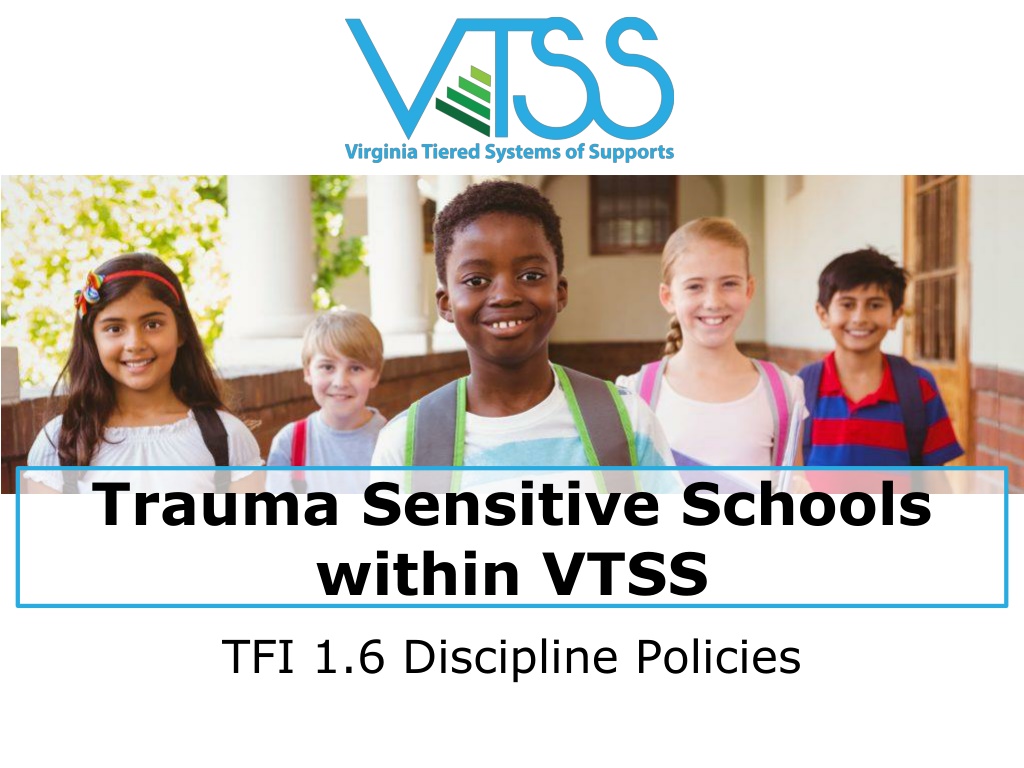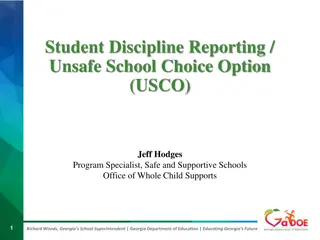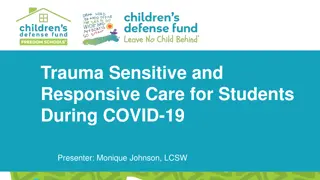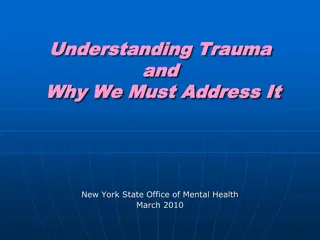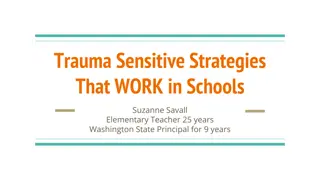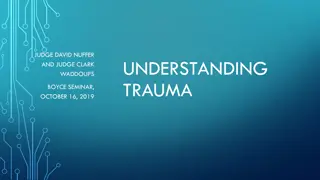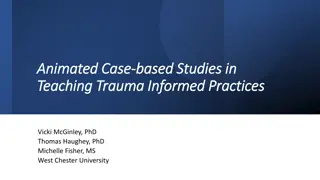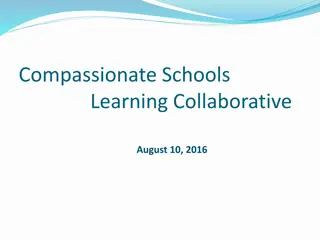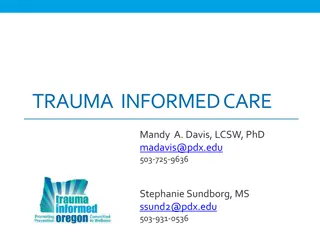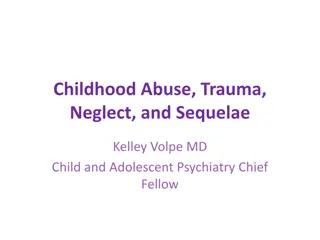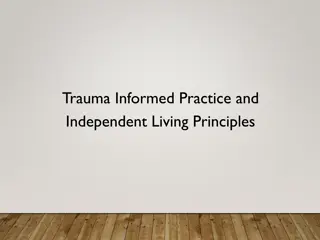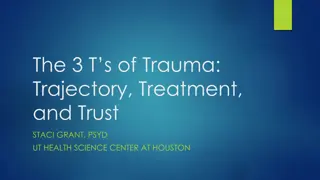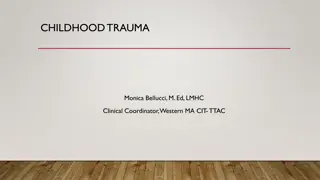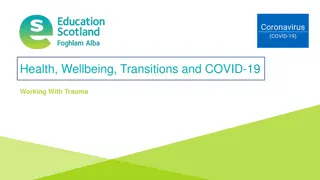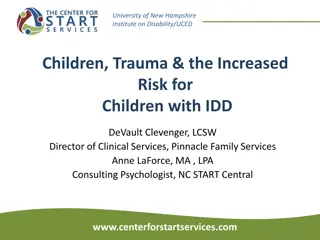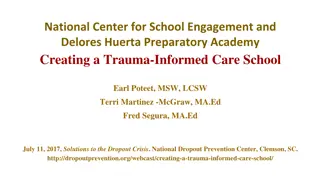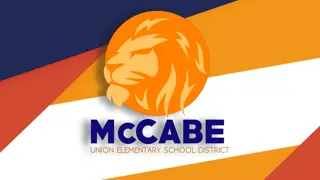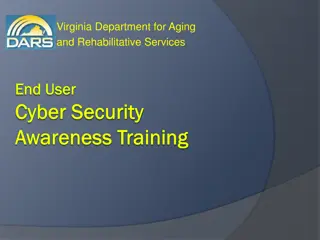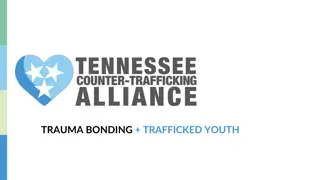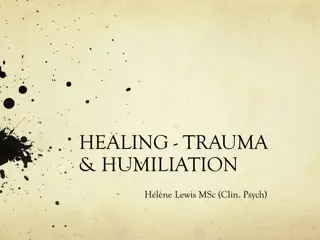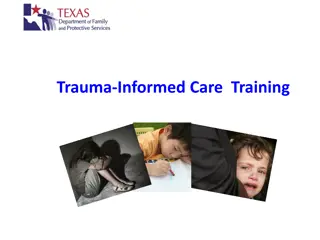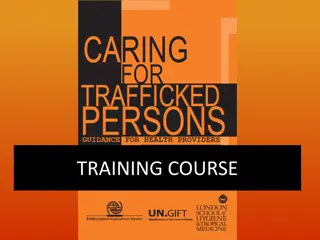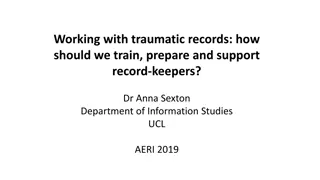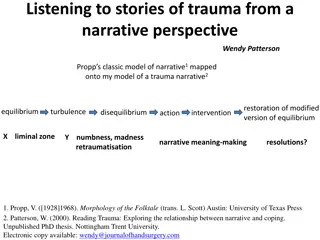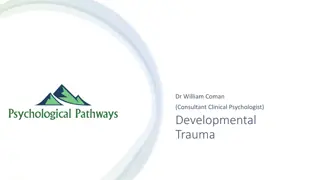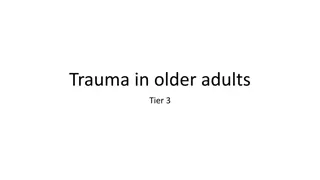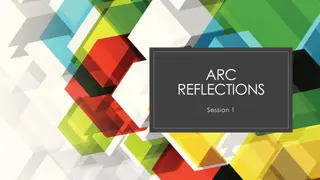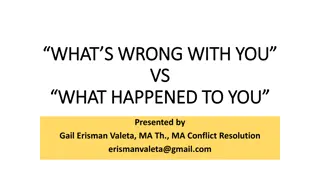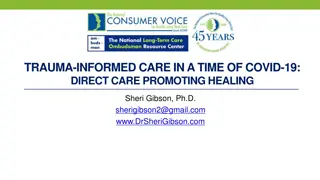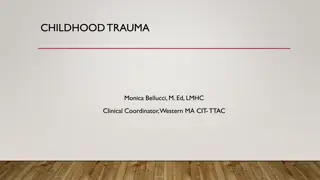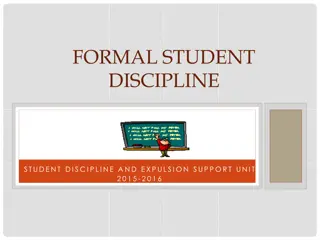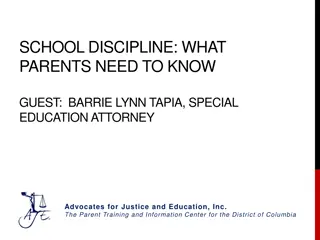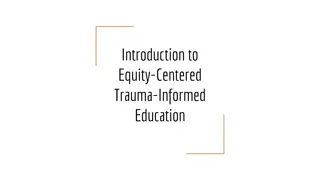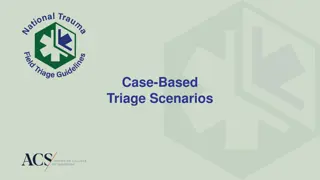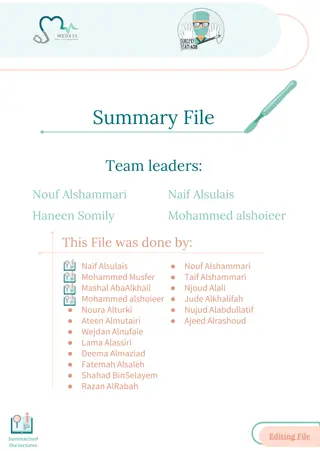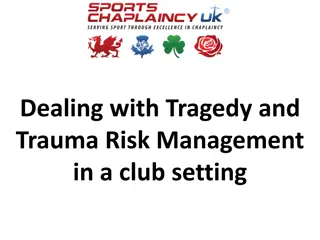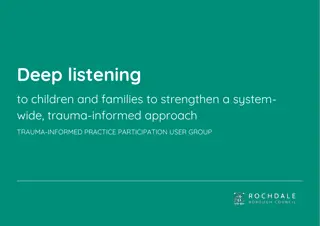Understanding Trauma-Sensitive Discipline Policies in Schools
Explore the concept of trauma-sensitive discipline policies in schools within the framework of VTSS TFI 1.6. Gain insights into changes in the Model Code of Conduct, identify vulnerable decision points, and incorporate trauma-sensitive approaches to respond to challenging behaviors. Embrace proactive, instructive, and restorative disciplinary strategies to enhance student well-being and social-emotional skill development.
Download Presentation

Please find below an Image/Link to download the presentation.
The content on the website is provided AS IS for your information and personal use only. It may not be sold, licensed, or shared on other websites without obtaining consent from the author. Download presentation by click this link. If you encounter any issues during the download, it is possible that the publisher has removed the file from their server.
E N D
Presentation Transcript
Trauma Sensitive Schools within VTSS TFI 1.6 Discipline Policies
What we will know and do As a result of this learning, participants will Gain an understanding to the changes to the Model Code of Conduct and how they are trauma sensitive Define and identify personal vulnerable decision points in order to effectively respond Incorporate a trauma sensitive lens into responses to interfering behavior
1.6 Discipline Policies TFI: School policies and procedures describe and emphasize proactive, instructive, and/or restorative approaches to student behavior that are implemented consistently. Mental Health Planning Tool: The school s policies and procedures include an explicit focus on Social Emotional skill development and well-being of students and are implemented consistently.
Model Code of Conduct Updated 2019 Prevention focus Tiered systems Social-Emotional skills Restorative questions Leveled responses
Recommended Practices Explicitly taught clear behavioral expectations Explicitly taught SEL skills Positive reinforcement of behavior Restorative practices to build relationships Family engagement Relationships that foster trust and build protective factors
Before we respond... Let s reflect on our own behavior.... setting events antecedents
Vulnerable Decision Points (VDP) A VDP is a given situation coupled with a person's internal state that increases the likelihood of bias affecting discipline decision making.
Situations Subjective problem behavior Defiance, Disrespect, Disruption Major vs. Minor Non-classroom areas hallways, cafeterias Classrooms Afternoons
Decision States Setting Events - an event occurring before or with an antecedent that increases the likelihood of a behavior Resource Depletion - as we become fatigued, our filters for appropriate behavior can be affected
Example: Resource Depletion Outcomes of parole hearings (Danziger et al. 2011)
Critical Features of Neutralizing Routines 1.If-then statement 2.Brief 3.Clear steps 4.Doable 5.Interrupts the chain of events
Recognizing Our Potential Punitive discipline is reduced when educators are taught to perceive acting-out behavior through the lens of psychological and emotional dysregulation. (Micere Keels, Educational Leadership, Oct. 2020)
Team Time Think about the concepts of vulnerable decision points and neutralizing routines. Are there things you need to consider with your own practices? How can you share this information with your staff?
Response to minor behavior Classroom Strategies for Minor Behavior
Under the Surface We do not get to decide what is stressful or traumatic for someone else. Please see your VTSS systems coach for the video.
Know the story What else is really going on here? What does this child need? How can I change my perspective? What keeps me only looking at the behavior? What is this behavior communicating right now? What in the environment could be triggering this behavior?
Needed Perspective Shift Traditional view: What s wrong with you? Why did you do that? Perspective Shift: How can I help, what happened? What do you need?
Perspective Shift Example Instead of he s attention seeking, Why isn t he getting attention in the way most of his peers do? Instead of she s avoiding, Many of us avoid when we are emotionally uncomfortable why is she uncomfortable? Instead of they want control, Why can t they get their wants & needs met without conflict? Instead of she has a trauma history, If exposure to ACE changes brain architecture, what skills might she need help with?
Remember the Goal When everyone handles infractions with instructional correction procedures, students learn that what happens when they misbehave is procedure not personal. Bob Algozzine Q-TIP
Connection before Correction Conference with student Use encouraging language
Validation In the moment, Don t try to fix it. Don t give a life lesson or lecture. Try using Validating Statements: What can I help you with? What do you need to feel safer? I hear you, that sounds hard. How did that make you feel? It sounds like you are really struggling.
Prompt the use of SEL skills Self-Awareness Self- Management Social Awareness Relationship Skills Responsible Decision Making
Offer Choices Allows student to have some control over the situation Often de-escalates the situation Only offer choices you are willing to accept
Sometimes, the decision takes us here...
What is the goal? Is the goal to apply a consequence, change the student behavior or teach appropriate behavior? The course of action that you choose should result in reaching that goal. Consistency is key, not severity.
Discipline Alignment with SEL and TSS Clear limits and boundaries Context of continued relationship Restore the harm, return to the community Provide rational detachment Involve natural supports Consider institutional bias
Alternatives to Exclusionary Practices problem solving/contracting restitution mini-course or skill modules parent involvement/supervision counseling community service behavior monitoring coordinated behavior plans alternative programming in-school suspension
Example Please see your VTSS systems coach for the video.
Final Thought Schools can no longer limit interventions to individual children with known trauma histories, but must create instructional frameworks that integrate a trauma-sensitive approach into all aspects of the school day. Susan Craig - Reaching and Teaching Children who Hurt
Action Planning with Team Consider what trauma-sensitive adjustments or enhancements to your school s discipline policies and procedures (including an explicit focus on Social Emotional skill development) to ensure well-being of students.
